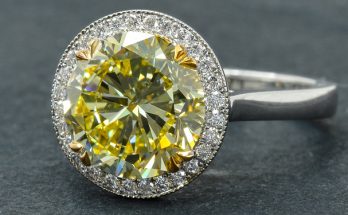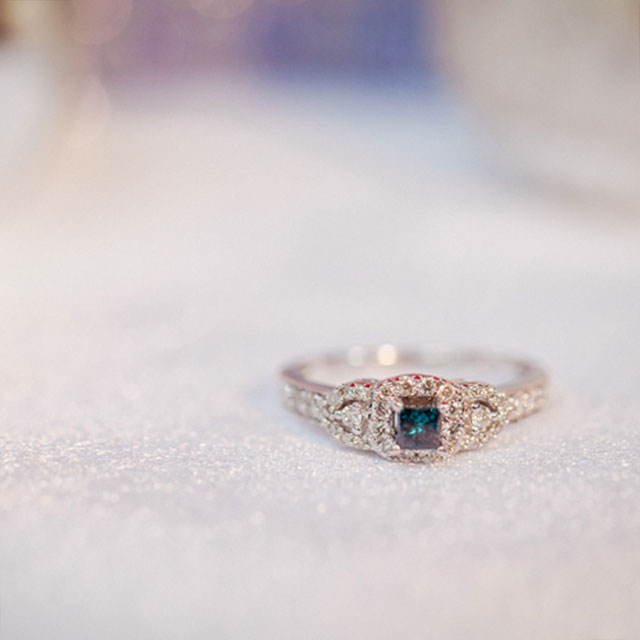The ideal cut was developed to create the ultimate light return in a diamond — which creates the fire, sparkle and brilliance you see.
In 1919, Marcel Tolkowsky devised a mathematical formula for cutting a diamond to create maximum brilliance and fire as part of his doctoral thesis at the University of London. Tolkowsky, a member of a diamond-cutting dynasty, created a process that called for a symmetrical angled cut of 58 facets on the diamond. It became known as the ideal cut.
Prior to this discovery, diamond cutting relied more on art than science. The Tolkowsky formula paved the way for modern diamond cutting, a highly specialized craft that combines artistry with science and geometry.If you find an antique diamond, sometimes called “old-mine” or “old European” cuts, you’ll notice a lack of the sparkle and light reflection and refraction we now associate with diamonds.
In the cut
When a diamond cutter is presented with a rough diamond — one that’s not shaped or polished — it’s up to the cutter to choose the shape (round, square or a “fancy” cut), the facet pattern, the girdle thickness and how to hide inclusions or flaws so they’re not apparent to the naked eye.You’ve heard of the 4Cs — carat, color, clarity and cut. Cut is the hardest to judge and quantify, because it varies depending on the diamond and how the cutter fashioned it.
As a result of the study of how light travels through a diamond, he devised his proportional formula for round brilliant diamonds. The biggest reason old-mine cuts don’t sparkle and shine the way modern diamonds do is the way the light traveled within the diamond. What Tolkowsky sought to eliminate was the light escaping from the bottom and sides of a diamond, which happens if a diamond’s cut is too shallow or too deep. Even today, a low-quality cut will allow light to escape. When light escapes, you lose the reflections, the spectrum of colors and the flashes of white light that makes diamonds so arresting.
Variations on a theme
As those in the jewelry industry and the public began seeing this breakthrough with their own eyes, many variations of the 58-facet round brilliant cut became available. All of them owe a huge debt to that original study. You’ll see the term ideal cut used by many manufacturers and retailers.
The original
The Tolkowsky cut isn’t just a part of diamond jewelry history. Neither is his family. Tolkowsky continued to experiment and cut diamonds until his death in 1991, and his legacy lives on. Tolkowsky diamonds continue to hold a place in the top tiers, and members of the Tolkowsky family continue to innovate. Tolkowsky round diamonds are guaranteed to score a minimum of three “very high” ratings for SI2 solitaires and two “very high” ratings for SI1 bridal and studs in the measurements of brilliance, fire and sparkle in a report by GemEx, an independent scientific laboratory that specializes in measuring diamonds’ light performance.
You can find Tolkowsky diamonds at jewelry stores like Kay Jewelers and Jared The Galleria Of Jewelry.



